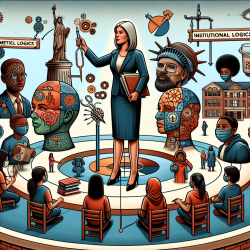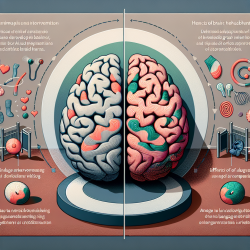Introduction
The COVID-19 pandemic has been a significant disruptor in the field of education, particularly affecting special education (SpEd) services. As educators, leaders, and policymakers grapple with the ongoing challenges, there is a pressing need to reset the structures and practices of SpEd to ensure equity and justice for students with disabilities (SWDs). This blog explores the insights from the research article "Re-setting special education for justice: An essay on the logics and infrastructure enabling deep change in the COVID-19-era" by Woulfin and Jones, and offers practical steps for practitioners to improve their skills and SpEd implementation.
The Three Logics of Special Education
The research identifies three dominant logics in special education: compliance, intervention, and equity. Understanding these logics can help educators and leaders navigate the complexities of SpEd implementation.
- Compliance Logic: Focuses on adhering to legal guidelines and ensuring that SWDs have equal access to educational opportunities. This logic is rooted in legal structures and often emphasizes bureaucratic tasks.
- Intervention Logic: Centers on providing specialized instruction and services to improve specific outcomes for SWDs. It draws from medical models and requires precise management of resources and services.
- Equity Logic: Advocates for dismantling ableist and racist structures to achieve just outcomes for SWDs. This logic emphasizes inclusive practices and recognizes the diverse identities of students.
Implementing the Equity Model
To effectively implement the equity model in SpEd, practitioners must focus on several key areas:
- Professional Development (PD): Ongoing, contextualized PD is crucial for building educators' capacity to understand and apply the equity model. PD should address the intersection of racism, ableism, and SpEd, and promote inclusive, culturally responsive practices.
- Leadership: Leaders play a pivotal role in framing and communicating the importance of equity-oriented SpEd. They must design systems that support inclusive practices and advocate for necessary resources.
- Infrastructure: Positive working conditions and coherent infrastructure are essential for enabling deep change. Reducing administrative burdens and providing time and resources for educators to focus on equity can significantly improve SpEd implementation.
Encouraging Further Research
While the research provides a comprehensive framework for resetting SpEd, there is still much to explore. Practitioners are encouraged to engage in further research to understand the nuances of SpEd implementation in their specific contexts. Collaborating with researchers and participating in professional networks can provide valuable insights and support.
Conclusion
The COVID-19 pandemic has highlighted the need for a hard reset in special education, focusing on equity and justice for SWDs. By understanding and applying the three logics of SpEd, practitioners can navigate the complexities of this field and work towards more inclusive and equitable educational experiences. To read the original research paper, please follow this link: Re-setting special education for justice: An essay on the logics and infrastructure enabling deep change in the COVID-19-era.










